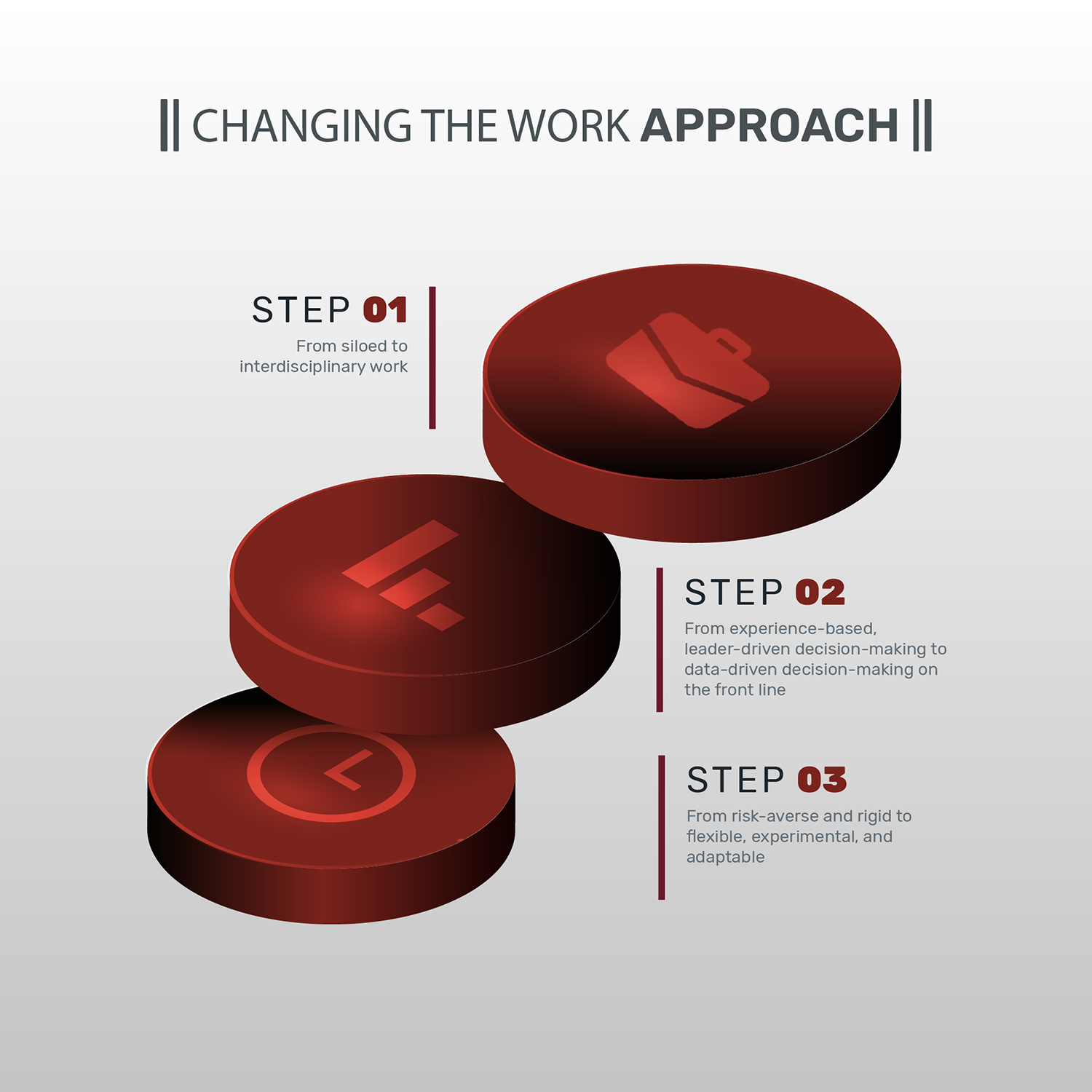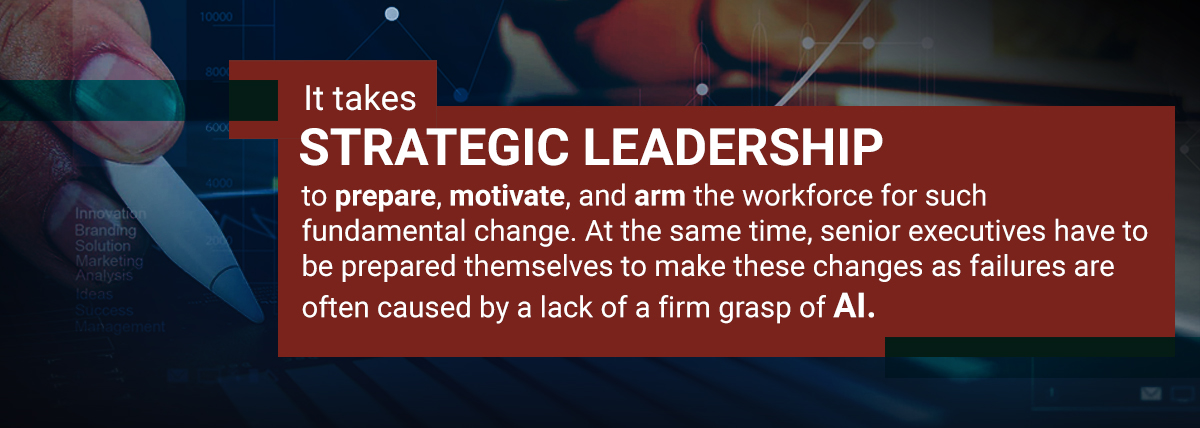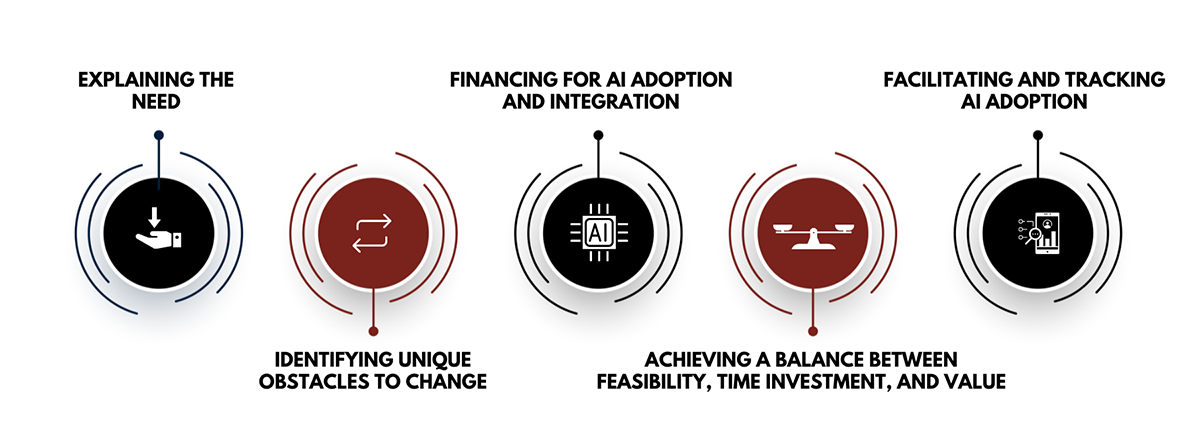To survive and remain competitive in today's economic and business environment, organizations must lead large-scale changes. Constant organizational change is the new normal in an ever-changing political, social, and economical atmosphere. Artificial intelligence is one of the few innovations that have the potential to assist businesses to transcend significant commercial chasms. AI has immense potential to rocket businesses above the established order and adapts to the new dynamics in business operations.
The year 2016 marked the beginning of the business world's recognition of AI potential. Ever since:
AI software programs were able to generate entire movie screenplays, predict the Kentucky Derby, and defeat video game world champions — yet the technological improvements did not stop there.
China has implemented AI in more than 1700 schools across 200 cities.
A team at Flinders University in South Australia produced a flu vaccine designed by AI that outperformed other flu vaccines.
With continued innovations in organizations and their business strategies, AI is becoming an integral part of every industry. Since then, numerous organizations, including several Fortune 500 companies have begun to consider what AI can do for their operations and business strategies.
According to McKinsey, artificial intelligence will add USD 13 trillion to the global economy over the next 10 years. In a survey conducted by Gartner, over 37 percent of companies have implemented AI in some form. Organizations, on the other hand, are having difficulty scaling up their AI projects. Many have run only ad hoc projects or applied AI to just one business process. According to a Harvard Business Review (HBR) study, AI programs encounter significant cultural and organizational challenges. However, having several business leaders who take steps to break down those barriers can effectively leverage AI's potential to bring changes to their business strategies and operations.
One of the most common blunders made by company leaders is treating AI as a plug-and-play technology that produces instant results. While working on their business strategies, they decide to get a few projects started and begin investing millions in data infrastructure, AI software tools such as Tensorflow, Pytorch, Caffe, CNTK, and Theano, and data expertise. Some projects can achieve minor positive results in specific areas of organizations. However, months or even years pass without the significant triumphs that the executives had hoped for. Several firms struggle to transition from trials to company-wide programs – and from discrete business concerns like improved client segmentation to big business challenges like improving the entire customer journey.
Business leaders frequently overestimate the requirements for AI. While cutting-edge technology and experience are critical, a company's culture, structure, and working methods must also be in sync to encourage widespread AI adoption. Traditional attitudes and ways of working, on the other hand, are incompatible with AI in most firms that weren't established digitally.

AI has the greatest impact when it is built by cross-functional teams with a diverse mix of abilities and viewpoints. Businesses and operational leaders will collaborate with analytics professionals to ensure that efforts are directed toward broad organizational goals rather than specific business concerns. Diverse teams can also address the operational changes that new applications may necessitate – for example, adopting an algorithm that forecasts maintenance needs should be accompanied by rethinking maintenance routines. When development teams incorporate end-users in the design of programs, the chances of adoption increase significantly.
Employees at all levels of the business hierarchy must complement their judgment, experience, and intuition with algorithm recommendations to arrive at better conclusions than either humans or robots could achieve on their own, in an AI-driven future. However, for this approach to work, people at all levels in the organization must trust algorithms and feel empowered to make decisions – a change from the traditional top-down approach.
The mindset that an idea needs to be completely polished, or a business tool or business strategy needs to have every bell and whistle before it is implemented must be shed. In their first iteration, AI applications seldom offer all of their desired capabilities. Reframing mistakes as sources of discoveries will help reduce the fear of failure, reinforcing the test-and-learn mentality. Getting early feedback from users and incorporating it into future versions will allow firms to identify potential problems and fix them before they become costly. The development process will speed up, allowing small AI teams to create minimum viable products in a matter of weeks rather than months.

To encourage employee participation and smoothen the way for successful AI launches, leaders should focus on the following early in the process:

Using a captivating tale to explain the importance of change and how it will benefit them can help companies comprehend the value of change and implement successful business strategies. This is especially crucial when it comes to AI projects because employees' resistance to AI is exacerbated by their worry that it will remove jobs. Business leaders need to convey a vision that rallies everyone behind a common goal. Employees need to understand how AI can benefit the business and how it will fit into a new, AI-oriented culture. Employees, in particular, require assurance from their employers and corporate leaders that AI will enhance rather than replace their jobs.
Across organizations, certain obstacles, like employees' fear of becoming obsolete, are common. But a company's culture might have distinct characteristics that contribute to resistance, too. For example, in the case of a company that prides itself on its strategy and ability to engage customers, relationship managers may reject the idea that AI could deliver better results and decline to consider tailored product recommendations. Managers in large companies who believe their status is determined by the number of employees they supervise may object to decentralized decision-making or reduced reporting that AI could allow.
Business leaders who understand these barriers to change can not only make appropriate decisions regarding how to communicate with employees, but also determine where to invest, which AI initiatives are most feasible, what training to offer, and what incentives may be necessary.
According to HBR reports, in nearly 90 percent of companies with successful scaling practices, over half of their analytics budgets were spent on activities that increased the adoption of AI, thereby paving the way for organizational change to keep pace with technology. These activities included workflow redesigns, customized messaging, and training. Among the remaining companies, only 23 percent had committed similar resources.
AI initiatives that are extremely complicated or take longer than a year to implement can jeopardize existing and future AI efforts. Organizations should not focus exclusively on quick wins; they should build a portfolio of initiatives with varying time horizons. A project that automates processes without human involvement, such as AI-assisted fraud detection, can be successful in months, while one requiring human intervention, such as AI-based customer service, is likely to be successful over a long period.
Businesses must prioritize their initiatives based on a long-term perspective, keeping in mind how multiple initiatives with different deadlines might be coordinated to maximize value.
For example, a firm might need to set up several sales and marketing initiatives to gain a detailed view of its customers that will allow AI to make micro-segments. Some capabilities, such as targeted offers, could deliver value in a few months, while the entire suite of capabilities could take 12-18 months to reach full effectiveness.
Employees may be more likely to adopt artificial intelligence if corporate leaders and employers push them to compare the outcomes made with and without it. At one commodity company, traders discovered their non-AI-supported forecasts were about half right – no better than guesswork. It made them more receptive to using artificial intelligence to improve forecasting.
Companies that successfully adopt AI across their businesses will have a significant competitive edge in a world where humans and machines working together outperform humans and machines operating themselves. AI is continually evolving, and new AI applications will require organizations to change fundamentally, which can be challenging. Business leaders must guide their organizations through these changes carefully. When AI tools are widely used, those closest to the action become increasingly capable of reaching decisions once made by the top executives, flattening organizational hierarchies. In turn, this encourages greater collaboration and greater innovation.

CredBadge™ is a proprietary, secure, digital badging platform that provides for seamless authentication and verification of credentials across digital media worldwide.
CredBadge™ powered credentials ensure that professionals can showcase and verify their qualifications and credentials across all digital platforms, and at any time, across the planet.

Keep yourself informed on the latest updates and information about business strategy by subscribing to our newsletter.